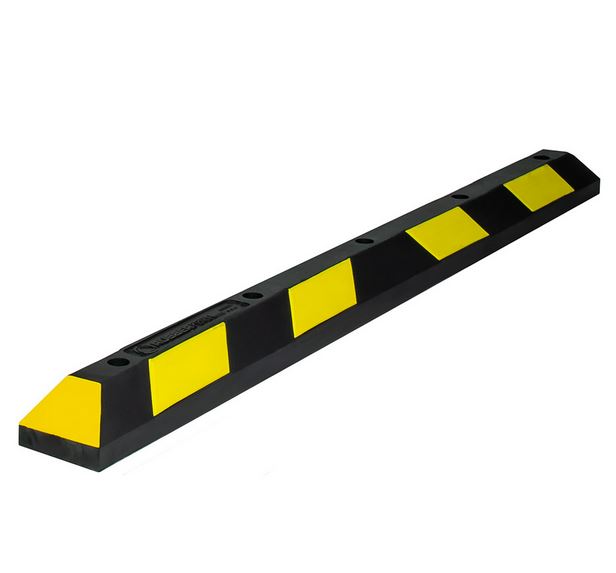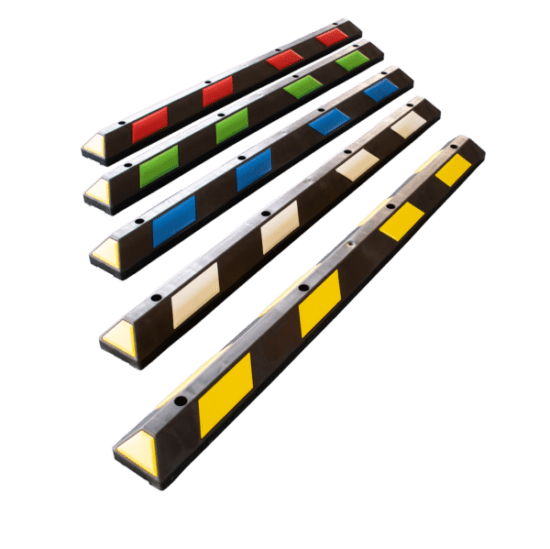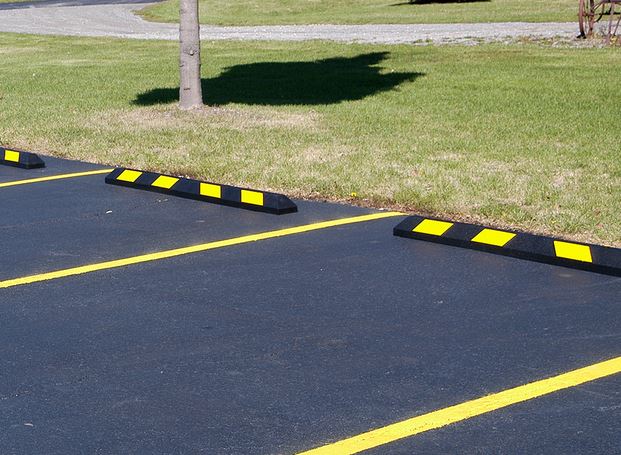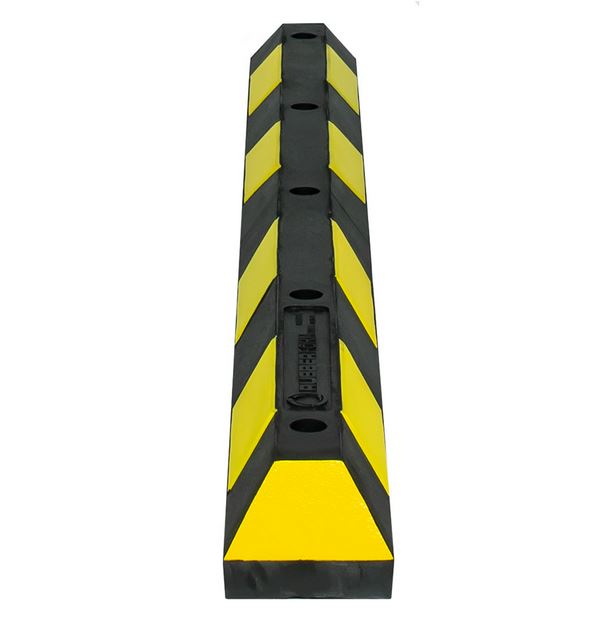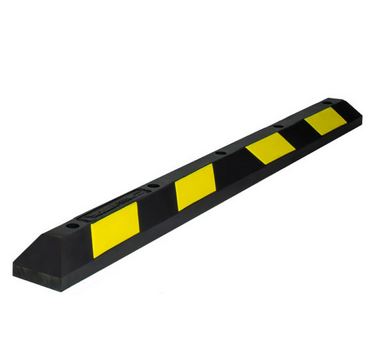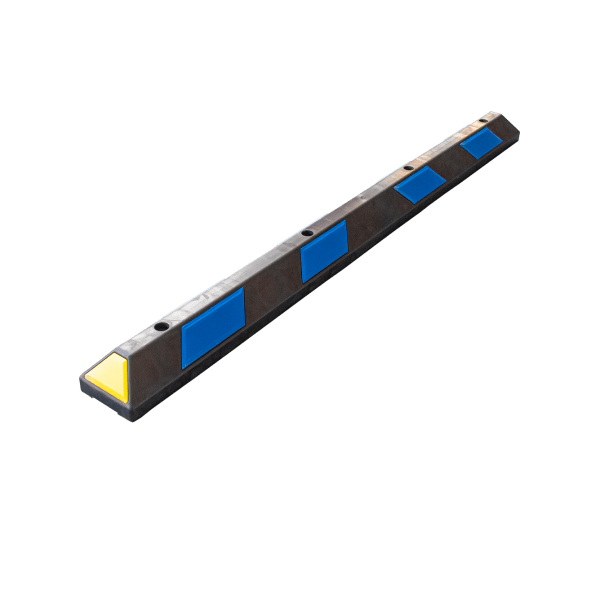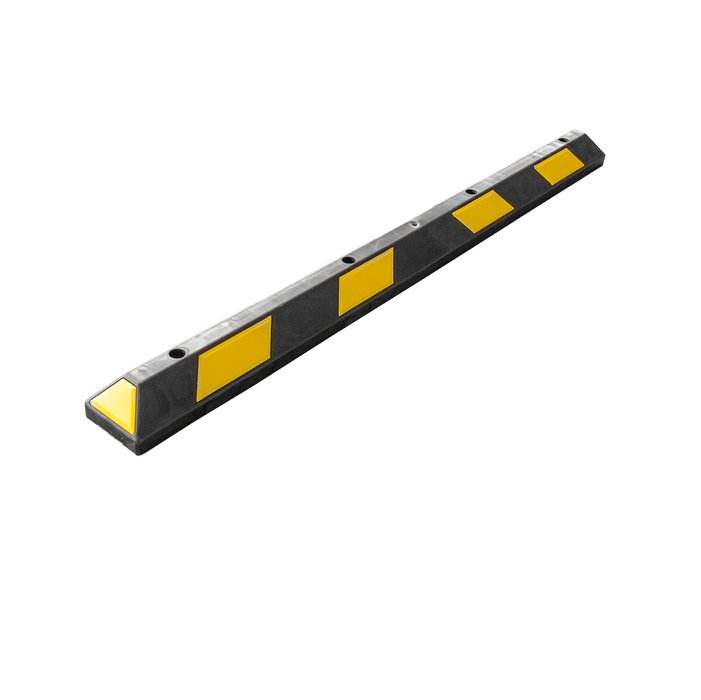The Complete Guide to Rubber Wheel Stops: A Practical Solution for Safe Parking Spaces
Rubber wheel stops are a durable, cost-effective way to improve parking lot safety and prevent
property damage. Whether you manage a commercial lot, residential complex, or industrial facility, rubber wheel stops
help keep vehicles properly aligned and protect walls, fences, and sidewalks from accidental impacts.
What Is a Rubber Wheel Stop?
A rubber wheel stop (also called a parking stop or car stop) is a
barrier placed at the front of parking spaces to prevent vehicles from rolling too far forward.
Unlike concrete stops, rubber wheel stops are lightweight, flexible, and won’t crack or chip over
time. Made from recycled rubber materials, they are eco-friendly and built to withstand harsh outdoor
conditions, including UV rays, rain, and temperature changes.

Rubber Wheel Stop Example
Why Use Rubber Wheel Stops?
- ✅ Protect Vehicles and Property: Prevent cars, trucks, and trailers from damaging walls, fences,
sidewalks, and other parked vehicles.
- ✅ Organize and Improve Traffic Flow: Clearly mark parking spaces, guiding drivers into proper
alignment for safety.
- ✅ Durable and Weather Resistant: Rubber doesn’t crack under extreme weather conditions and holds
up to vehicle impacts without breaking.
- ✅ Eco-Friendly and Cost-Effective: Made from recycled rubber, these stops are environmentally
friendly and easier to install, reducing material and labor costs.
When Should You Use Rubber Wheel Stops?
- Commercial Parking Lots: Keep vehicles aligned and prevent collisions with storefronts or
pedestrian areas.
- Residential Complexes: Maintain organized parking for tenants and guests.
- Industrial and Warehouse Settings: Safely stop trucks and trailers, preventing damage to
buildings or equipment.
- Loading Zones and Delivery Areas: Guide delivery vehicles to the right stopping point.
Product Specifics
- Material: Recycled rubber with embedded reflective strips.
- Sizes Available: 6'
- Mounting: Pre-drilled holes for easy installation on concrete or asphalt.
How to Install a Rubber Wheel Stop — Step-by-Step

Rubber Wheel Stop Installed in Parking Lot
Step 1: Plan and Measure
- Mark where each wheel stop will be placed, ideally centered in each parking space.
- Leave space from curbs or sidewalks for proper vehicle overhang.
Step 2: Prepare the Surface
- Clean the surface (asphalt or concrete) to remove dirt and debris.
- Ensure the area is level and dry before installation.
Step 3: Position and Drill
- Align the wheel stop over the marked spot.
- Drill holes for bolts — use expansion bolts for concrete and
rebar spikes for asphalt.
Step 4: Secure in Place
- Insert bolts through the pre-drilled holes and fasten securely.
Examples of Where Rubber Wheel Stops Are Used
| Location Type |
Purpose |
| Retail Parking Lots |
Prevent cars from rolling onto sidewalks |
| Apartment Complex Parking |
Organize tenant and visitor parking |
| Truck Loading Bays |
Stop trucks and trailers at a safe distance |
| Handicap Parking Spots |
Ensure safe stopping without overrun |
| Electric Vehicle Charging Stations |
Prevent hitting chargers or bollards |
Pro Tips for Using Rubber Wheel Stops
- Pair with painted lines for clearly defined spaces.
- Add reflective strips for night visibility.
- Regularly inspect and tighten bolts to keep stops secure.
- For heavy trucks, use extra-wide or reinforced models.
Final Thoughts
Rubber wheel stops are an affordable, durable, and eco-friendly solution for safer, more organized
parking lots. They’re easy to install, weather-resistant, and protect both vehicles and property.
If you need product recommendations or bulk pricing, contact us — we’re happy to help you create a
safer parking environment!

